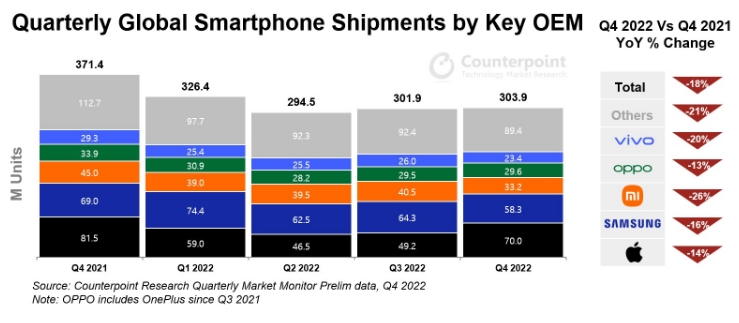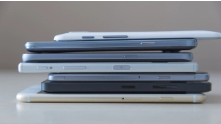High Hopes for Second Half Smartphone Shipments
The electronics supply chain is widely expected to get a lift in the second half of the year from an increase in smartphone shipments due to the launch of several next-generation flagship handsets, notably new models of Apple's iPhone.
Smartphone shipments in the second quarter were down 1.3 percent from the second quarter of 2016 and down 0.8 percent compared to the first quarter of this year, according to market research firm International Data Corp. (IDC). But the firm — like other market watchers — expects smartphone shipments to bounce back in the second half of the year to post year-over-year growth in both the third and fourth quarters.
Market research firm TrendForce estimates that total smartphone production volume in the second half will increase by 10 percent compared to the first half of the year, reaching more than 716 million units. The firm estimated that first half smartphone production totaled about 650 million units, an increase of 7 percent compared with the first half of 2016.
In addition to Apple's iPhone 8 — expected to launch next month to mark the 10th anniversary of the initial iPhone launch — Samsung is widely expected to introduce its Galaxy Note 8 smartphone later this month. Other high profile devices are also expected to start shipping.
"Despite some key launches in the second quarter from some well-known players, all eyes will be on the ultra-high-end flagships set to arrive this fall," said Anthony Scarsella, research manager with IDC's Worldwide Quarterly Mobile Phone Tracker, in a press statement. "With devices like the iPhone 8, [LTE] Pixel 2, Note 8, and [LG] V30 in the pipeline, the competition will be fierce come September.
Though overall smartphone shipment volumes slipped, each of the top five smartphone vendors grew shipments during the second quarter, according to IDC, demonstrating the extent to which the smartphone market is a game of haves versus have nots.
Ryan Reith, program vice president with IDC's Worldwide Quarterly Mobile Device Trackers, said the biggest reason for smartphone shipment contraction was the performance of vendors outside of the top five.
"It's no secret that the smartphone market is a very challenging segment for companies to maintain or grow share, especially as already low average selling prices declined by another 4.3 percent in 2016, Reith said. "The smaller, more localized vendors will continue to struggle, especially as the leading volume drivers build out their portfolio into new markets and price segments."
在线留言询价
- 一周热料
- 紧缺物料秒杀
| 型号 | 品牌 | 询价 |
|---|---|---|
| MC33074DR2G | onsemi | |
| BD71847AMWV-E2 | ROHM Semiconductor | |
| CDZVT2R20B | ROHM Semiconductor | |
| RB751G-40T2R | ROHM Semiconductor | |
| TL431ACLPR | Texas Instruments |
| 型号 | 品牌 | 抢购 |
|---|---|---|
| ESR03EZPJ151 | ROHM Semiconductor | |
| BP3621 | ROHM Semiconductor | |
| IPZ40N04S5L4R8ATMA1 | Infineon Technologies | |
| STM32F429IGT6 | STMicroelectronics | |
| BU33JA2MNVX-CTL | ROHM Semiconductor | |
| TPS63050YFFR | Texas Instruments |
- 周排行榜
- 月排行榜
AMEYA360公众号二维码
识别二维码,即可关注


























